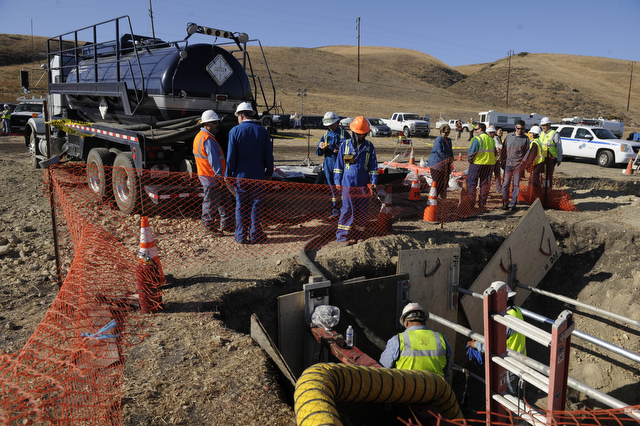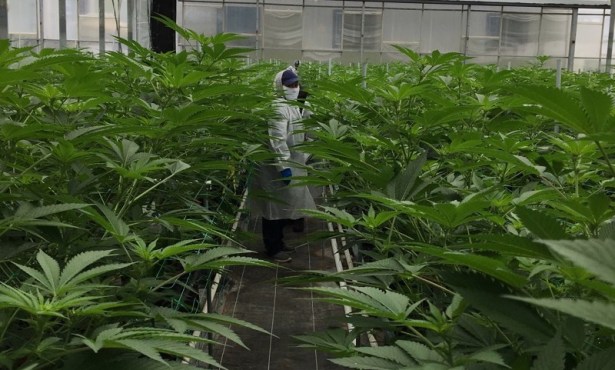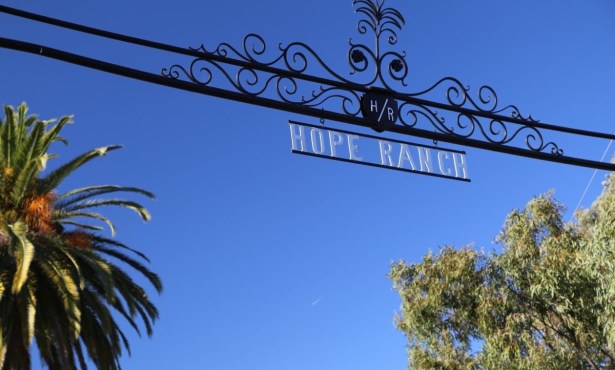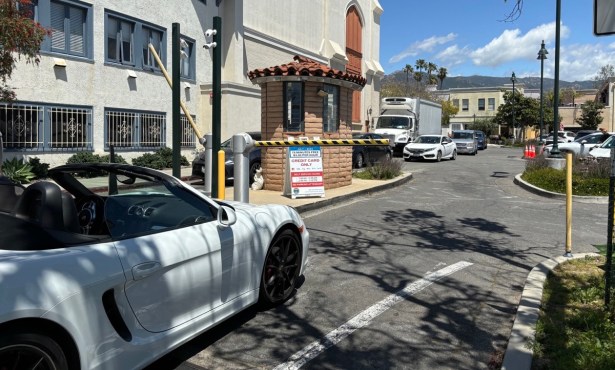The Mysterious Case of the Automatic Shutoff Valve
Assessing the Risks and Rewards of Oil Transportation

“A client of mine [says] he rarely hears people complain [about oil pipelines] while wearing a burlap sack and riding a horse,” pipeline integrity consultant Andrew Kendrick noted while discussing the Refugio oil spill the other day, acknowledging the dominant role that petroleum plays in our day-to-day lives.
The spill beckons the question of how much risk could have been avoided through better use of technology in the construction of the failed Plains All American pipeline. After all, it was designed to feed California’s petroleum-hungry populace, which, according to the Western States Petroleum Association, burns through 43 million gallons of gas and 8 million gallons of diesel every single day just to fuel vehicles. About half the state’s petroleum is imported from foreign sources, including 14 percent from Saudi Arabia. Thirty-seven percent is produced in-state, and the balance comes from Alaska.
While assenting to such facts, Kendrick also described himself as an environmentalist and a surfer. He reconciles these two perspectives by running a business — that includes an office in Santa Barbara — with the goal of reducing leaks and accidents.
Kendrick is one of the experts The Santa Barbara Independent talked with in order to understand what prosecutors and regulators will investigate as they seek the cause of last Tuesday’s oil spill and determine whether pipeline operator Plains All American was criminally negligent, victim to an act of God, or, more than likely, somewhere in between.
Much speculation has centered around the absence of an automatic shutoff valve on Line 901, which leaked about 100,000 gallons of oil, about 20,000 of it falling into the Pacific Ocean along the Gaviota Coast. As first reported in this newspaper, such a safety mechanism is required of all pipelines in the county, save for those operated by Plains All American because of a decades-old lawsuit in which the company successfully challenged the county’s oversight. The 64-thousand-dollar question is whether this feature would have spared the ecosystems of the pristine Gaviota Coast from an oil-soaked fate.
In a press release distributed on Wednesday, Plains All American began to lay out its case that an automatic shutoff valve would actually decrease safety.
“We do not feel it is prudent to install an automatic shutoff valve for safety reasons,” read the release.
“While these types of valves may be appropriate for use in the movement of compressible gases, they are not considered to be appropriate for use in the movement of incompressible fluids. Line 901 is a large diameter, high-volume, crude oil pipeline. Automatically closing a valve on an operating pipeline such as this increases the pressure which could create an unsafe situation. The use of these types of valves could have the unintended consequence of pressuring the line beyond its maximum operating pressure. We liken this pressure to slamming a car into ‘park’ when driving down the freeway. It is much safer for controllers who understand the hydraulics of a crude oil pipeline to shut it down using a planned sequence of steps rather than for a computer to automatically close a valve on oil that is traveling in a confined space under high pressure.”
Upon hearing this explanation, Richard Kuprewicz, president of Accufacts, Inc., a company that specializes in pipeline safety, stated, “That’s a false statement. Just blatantly false.” He quickly elaborated, explaining that pressure caused by closing valves, called “surge pressure,” certainly exists, adding, “Engineers are well aware of this, and there are ways to design pipelines so that this isn’t a problem.”
Federal regulations do not require automatic shutoff valves, although they do require operators to assess whether they need them, explained Kendrick. Such valves, he went on, are very “location dependent,” and they can’t just be placed anywhere on a line. Topography, or “elevation profile,” is the most important factor.
“We also have concerns about the spacing and location of valves,” said Samya Lutz, outreach coordinator for the nonprofit Pipeline Safety Trust, but she also noted that sensitive environmental features (called “highly sensitive areas” in regulatory circles) and proximity to rivers or beaches (check and check for Line 901) are factors that could tip the scales toward the installation of a shutoff valve.
Along its 10.6-mile route, the ruptured Line 901 does include three motor-operated valves that can be operated by a control center in Midland, Texas, as well as a check-valve that closes automatically when oil flows backward. Even if Plains All American installed a valve that would automatically stop the flow of crude when triggered by anomalies in the pipeline’s SCADA (supervisory control and data acquisition) system or its own “brain” that monitors conditions such as pressure and velocity, “Picking that point [of installation] is like using a Ouija board,” said Kendrick. “If your valve was five feet past that rupture, it would have done nothing.
“When the analysis is done,” said Kendrick, “I think the regulators will find several things happened that caused the failure … it’s rarely one thing.” He offered a real-world example from his own experience. A rock, jutting up against a pipe, simultaneously wore through a pipe’s anti-corrosion coating while blocking the line’s corrosion-protection system. The pipe, otherwise well designed, eventually failed.
In a famous analysis of the Three Mile Island nuclear meltdown, sociologist Charles Perrow coined the term “normal accident” to make a similar point. Unlike freak events (which are unavoidable) or equipment failures (which are clearly avoidable), normal accidents are unforeseeable in complex systems where the parts are “tightly coupled” or closely interrelated. They may include some element of operator error or unheeded warning signs, but these are evident only after the fact.
Kuprewicz, familiar with that theory, did not feel like it applied in this case. “This technology has been around for 40 years,” he said. “We’re not launching a space shuttle here.”
Inquiries to Plains All American for additional information were responded to by an email with a link to a website containing their press releases, including those quoted. The release of information by Plains All American and government agencies has been tightly controlled since the incident.
This lack of transparency also irked Kuprewicz, who is based in Washington state, but he happened to be driving past Refugio last Tuesday. He noticed a hydrocarbon cloud, looked over toward the beach, and saw that it was covered in “chocolate mousse.”
On Thursday Plains All American extracted a 40-foot section of pipeline containing the break, plus a five-foot buffer on each side; the company did not allow for photographs or release its own. Patrick Hodgins, Plains All American’s senior director of Safety & Security, said, “We understand that the community is interested in this effort, however we are not in a position to discuss what the pipe looks like — or anything about the affected piece of pipe — until the investigation is completed. Doing so would be speculation and inappropriate during an active investigation.”
“This isn’t a matter of national security,” said Kuprewicz, while suggesting that a single high-resolution color photograph would likely reveal the cause of the failure. He added that it should not take weeks for metallurgical analysis results. Possible causes of failure include corrosion, interference from a third party (for instance a construction crew slamming a fencepost into the line), or faulty welds.
Nathan Eady, vice president of SCS Engineers, a firm that helps guide energy projects through regulation, said that despite the Refugio spill, “Pipelines are by far the safest mode of transport for oil and gas.” While much has been made in recent years of the nation’s crumbling infrastructure, Line 901 is relatively new. Original construction commenced in 1986. This fact made the failure somewhat surprising to consultants, but it also makes resistance to a shutoff valve a curious decision. “In the scheme of things,” said Kuprewicz, “valves be cheap,” especially compared to the financial hit Plains All American will take to pay for the cleanup.
There’s also the public relations cost. Kendrick said that while you can’t place valves costing hundreds of thousands of dollars every 20 feet down a line, on the other hand, “What I ask my clients is, ‘when things go bad, can you still support your decision?’”
Kuprewicz, a longtime Arco employee before going into safety and regulation consulting, pointed out that organizational behavior must be studied alongside technology. He refused to speculate on whether Plains was prioritizing profits over protection before seeing the results of any investigations. What he would say is, “Never underestimate the ability of a group of smart people to do incredibly stupid things when they work as a group.”



